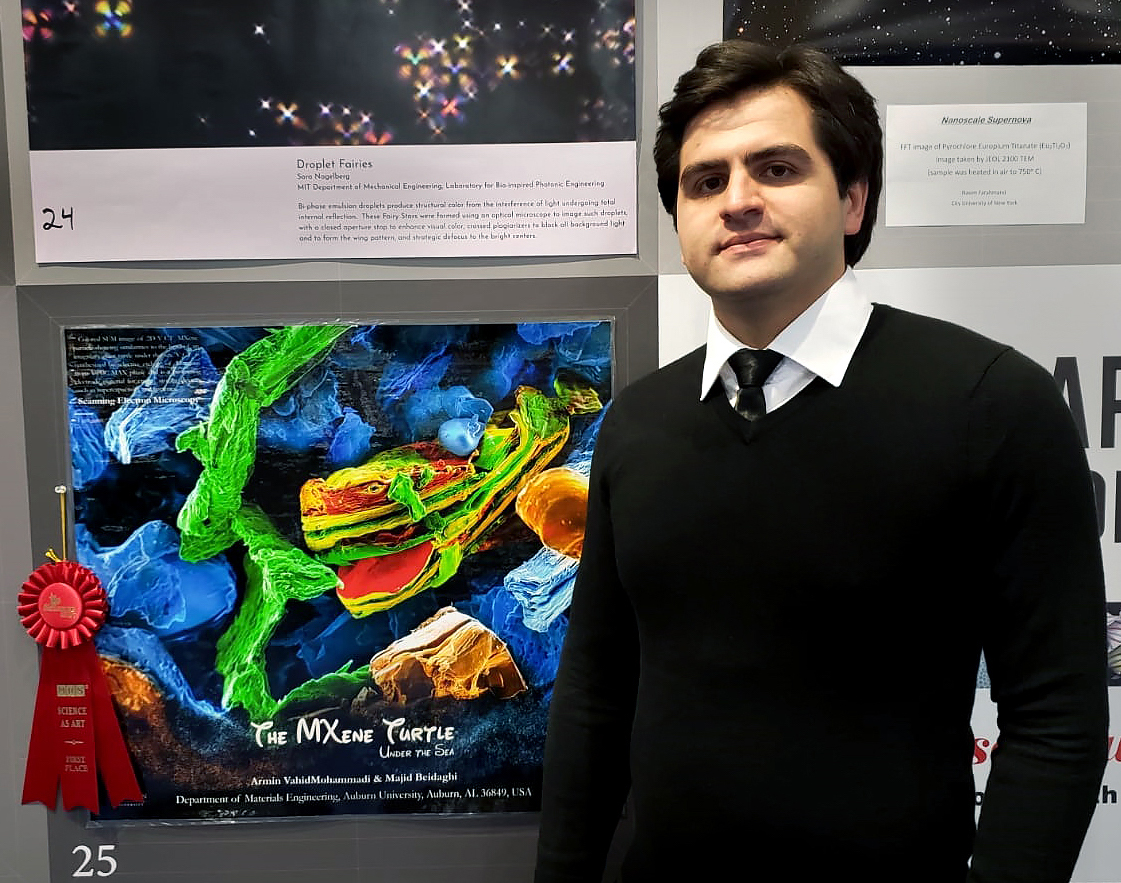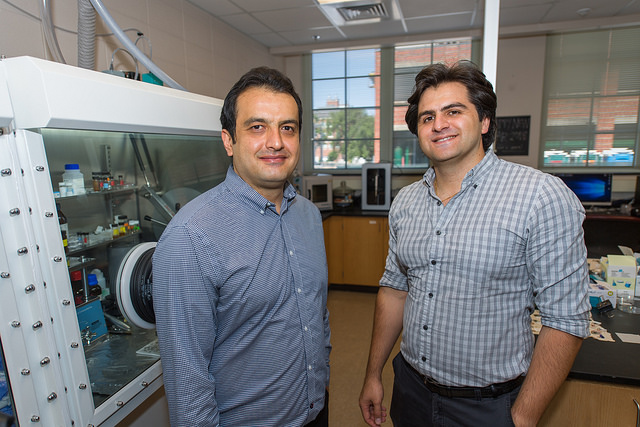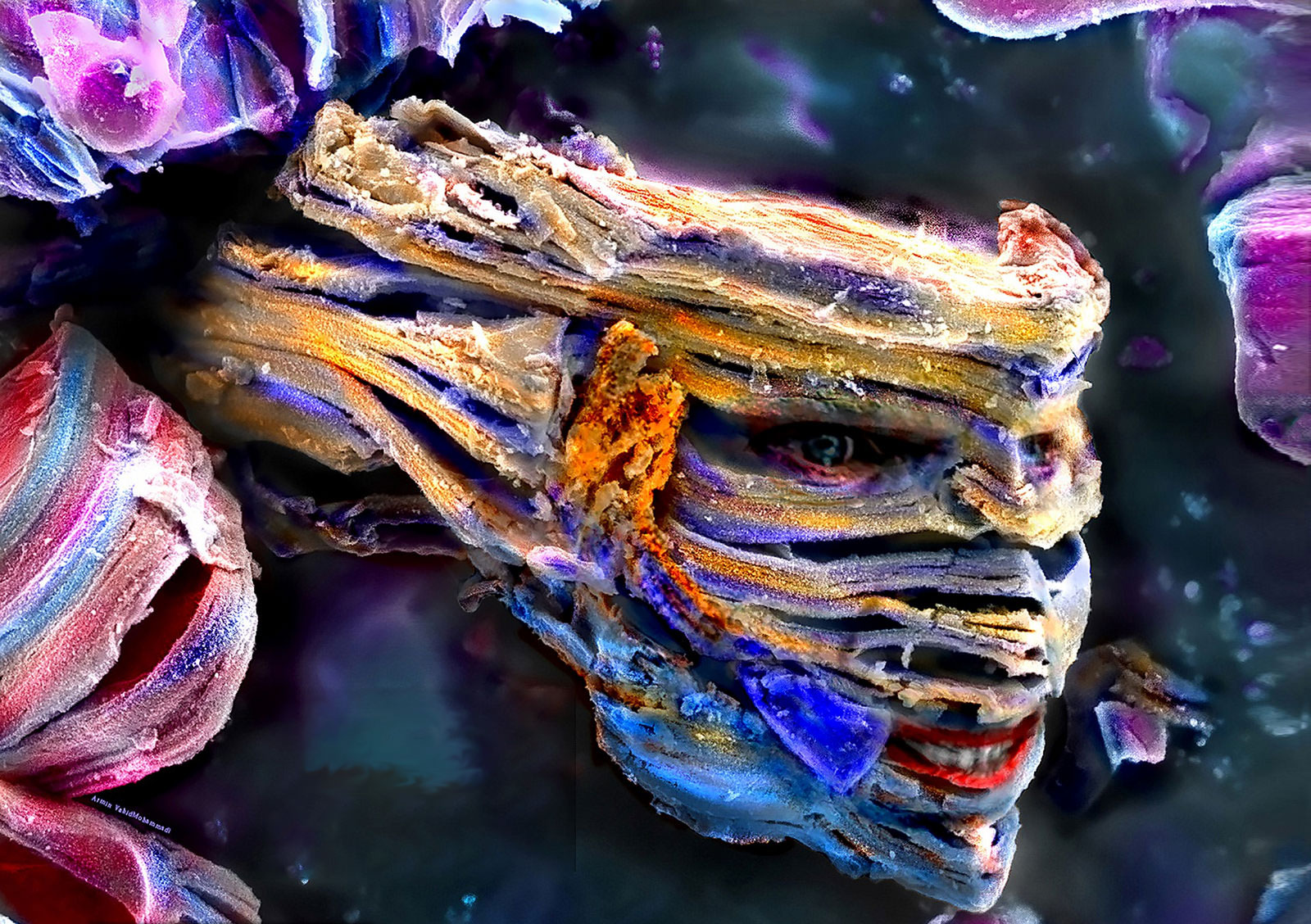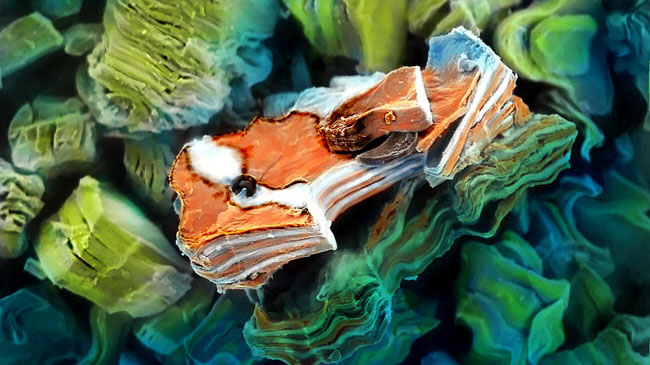Finding Nano: Auburn engineer uses Pixar, Potter to dominate competitions
Published: Jan 11, 2019 10:08 AM
By Jeremy Henderson
One day in March 2017, 30-year-old Armin VahidMohammadi was sitting at the $500,000 JSM-7000F scanning electron microscope (SEM), finding ways for two-dimensional conductive nanomaterials called MXenes to maybe one day charge your cell phone in two seconds…
...and finding Nemo.
There he was, 10 times smaller than the width of a human hair, swimming through shadowy layers of a MXene designated Ti2C.
VahidMohammadi cropped him out, brought him to life in Photoshop, logged onto JEOL’s website—JEOL makes the JSM-7000F—and clicked submit.
Naming “Nano Nemo on the Water” their 2017 Grand Prize winner was probably the easiest decision judges for the Japanese company’s annual SEM image contest have ever made.
VahidMohammadi’s stuff is just that good.
In less than three years, the doctoral student in the Auburn University Samuel Ginn College of Engineering has established something close to a dynasty on the competition circuit cultivated by aesthetically minded materials engineers who regularly interpret aspects of their research as works of art.
In 2016, the incredible “Nano Lord Voldemort” that VahidMohammadi, an avid Harry Potter fan, conjured from MXene particles placed first out of nearly 200 submissions in the Materials Research Society’s semi-annual Science as Art competition. Two years later, he won first again, this time with a turtle he spotted in clouds of vanadium carbide which wowed attendees at the 2018 Fall MRS Meeting and Exhibit in Boston.

The Science as Art competition began in 2005. It’s open to the nearly 15,000 society members across the globe. Only two have won first place more than once. The only student?
Auburn’s Armin VahidMohammadi.
“I don’t think most people realize it, but those awards are very competitive,” said Majid Beidaghi, an assistant professor in mechanical engineering, and VahidMohammadi’s faculty advisor.
Before coming to Auburn, Beidaghi was actually on the Drexel University research team that discovered MXenes in 2011.
“When I was doing my postdoctoral work at Drexel University, I used to work with students [on their entries] and it was very challenging. We maybe had one student win an award. Most just submitted things without really getting a good result.
“But Armin,” Beidaghi said, “ is very talented.”
And he doesn’t just mean in the lab.

You can’t find the commercials VahidMohammadi and his brother produced before coming to the United States as easily as, say, his microscopic interpretations of cartoon clownfish and psychopath wizards (which earned national attention). But some of his old 3D car designs still float around on computer graphics forums.
“Yeah, I was actually a 3D modeler and an animator back home,” said VahidMohammadi, a native of Iran. “It was 10 or 12 years ago. I made commercials with blue screen and green screen for local TV.”
The final project he put his name on before coming to the United States in 2013 involved rendering computer-generated imagery of Old Tehran for a made-for-television murder mystery.
“I was doing my studies and then working on those things,” VahidMohammadi said. “That was my outside work.
“So this,” he said of his nanomaterial masterpieces, “is kind of bringing those two worlds together.”
And it’s a match made in publicity heaven.

The latest issue of Advanced Materials features VahidMohammadi’s research on assembling 2D MXenes into highly stable pseudocapacitive electrodes that could charge almost instantly and provide power to supercapacitors for millions of charging cycles. That’s a big deal.
“Our findings are very important and hopefully will result in many different research directions in the future,” Beidaghi said. “But with the art Armin’s doing, you get that same kind of exposure, and maybe even more, because it’s not limited to any one journal. All people working in materials science are exposed to the competitions at these [MRS] conferences. I think there are, like, 10,000 attendees. So the exposure [for Auburn] is, I think, much higher.”
In other words, not even the most prestigious journal in the field can defeat He-Who-Must-Not-Be-Named.
Media Contact: , jeremyhenderson@auburn.edu, 334.844.3591
Nano Nemo on the Water

